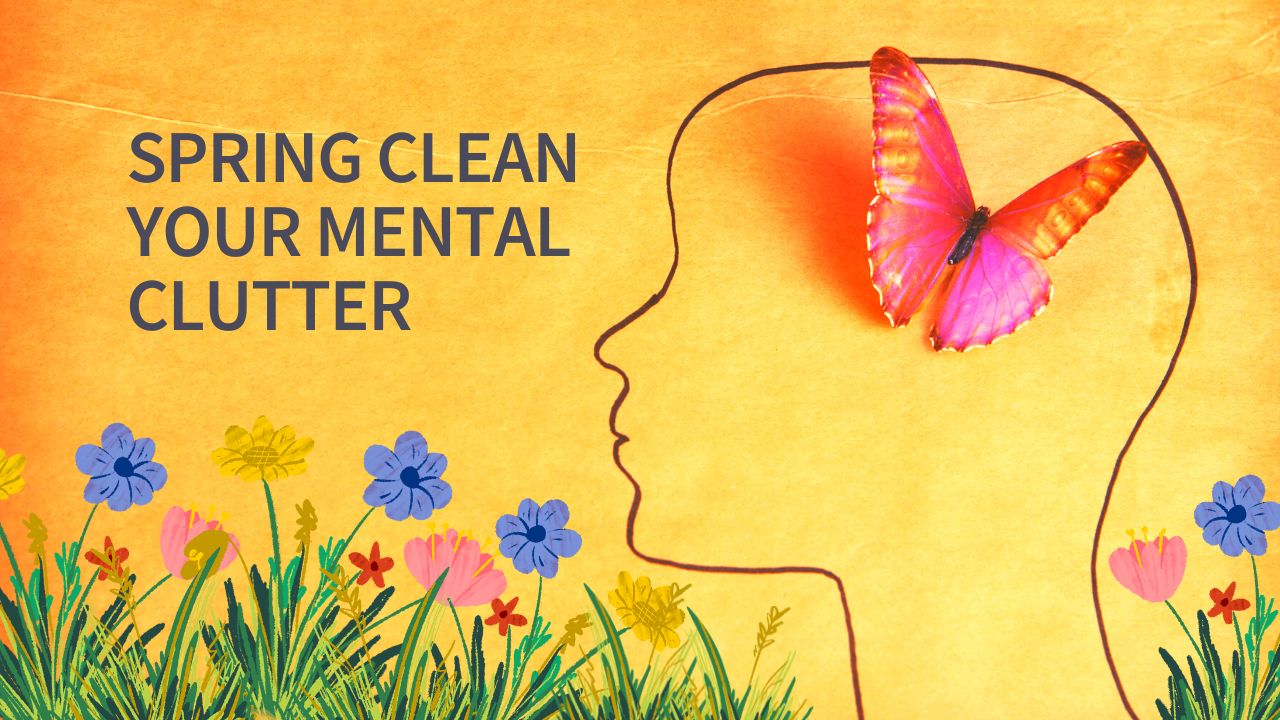by Kate Varness
Do you have a noisy mind?
Michael Singer, in The Untethered Soul: The Journey Beyond Yourself, writes about the voice inside your head that narrates what you encounter, what might happen, what has happened, and retells stories about yourself and others that fill your noisy mind.
The constant buzz in your brain has consequences:
- it scatters your attention and keeps your nervous system dysregulated
- it keeps you frozen with worry rather than taking action
- it reinforces your victim state (“Everyone’s against me” or “I suck”)
- it causes loops of overthinking about what you did or didn’t say, and did or didn’t do
- it looks for proof of what it already believes, regardless of whether that’s true or not
Most of all, it doesn’t feel good.
Why we have mental clutter
Humans generally do what has an immediate benefit. So, what benefit might excessive mind chatter give you?
Singer suggests that the mind’s “narration makes you feel more comfortable with the world around you. Like backseat driving, it makes you feel as though things are more in your control.”
It makes sense to me why we want to feel in control in the face of the unknown, even when it causes stress, physical ailments, problems in relationships, frustration, isolation and more.
A cluttered mind doesn’t simply go away, just like a cluttered closet gets more and more dysfunctional.
Spring clean your mental clutter
Before I shifted my business to helping women find mental clarity through Human Design, I worked with women to organize their homes for over 15 years as a Certified Professional Organizer specializing in Chronic Disorganization.
I’m very familiar with the process of getting organized – especially with people who have ADHD-like ways of being. The ACT Method for Organizing that I apply to every area in my Make Space for Abundance in Your Home course starts by assessing what you’re dealing with.
Picture the jam-packed closet blocked by stacks of laundry baskets you’ve been living out of for far too long. The starting point is not to make decisions, it’s to actually step back from the project. The same applies to mental clutter. The first step is to step back and realize that you are separate from your thoughts. Next, you process what you’re looking at and decide what you want. Finally, you experiment with new thoughts.
Step 1. ASSESS – Notice your thoughts and circumstances without judging them.
- I notice that I’m feeling agitated. What did I just finish doing? Oh yeah, I spent the last hour giving a potential client some free coaching instead of practicing a sales sequence. I notice that it felt good to help that person. I notice that this has happened before. I notice that I’m wanting to tell a story about what that means.
Step 2a. CATEGORIZE – Pay attention to thought pattern categories.
- My opinion of my business success changes after I scroll through Facebook. Other business owners post about how easy it is to get clients. Other business owners make live videos every day. Other business owners have more likes and comments. When I compare myself to others, my mood changes.
- When I finish a client session, I am excited about their progress. I enjoy being in the process with them. This excitement makes it easier to reach out to potential clients.
Step 2b. CHOOSE – Decide if the thought still fits you and let it go if it doesn’t.
- I notice that I feel guilty if I am not in my home office from 8-5 on Monday through Friday. When I started my online business, I thought that I should keep the same hours that I had at my old job. I don’t want to feel guilty about setting my own work hours. Instead, I want to feel free to make my own schedule.
Step 3. TEST – Experiment with a new thought.
- I want the freedom to create my own schedule. What if I try this new approach – guilt-free – for the next two weeks? I can schedule clients between 10-3 on Tuesdays, Wednesdays, and Thursdays. On Mondays, I can work on back-end business stuff, on Friday mornings I can do networking and sales calls, then I can stop work at lunchtime. I’ll keep track of what I like or don’t like and reassess after two weeks.
The most important step to spring clean your mental clutter
In order to spring clean your thoughts, Step 1 is essential. It may seem like noticing without judgment is not an action. I promise you that it is THE biggest action you can take. The stronger your noticing skills become, the easier it will be to practice the other steps.
I invite you to begin spring cleaning your mental clutter with my free masterclass. Less Worry, More Action Using Human Design.




